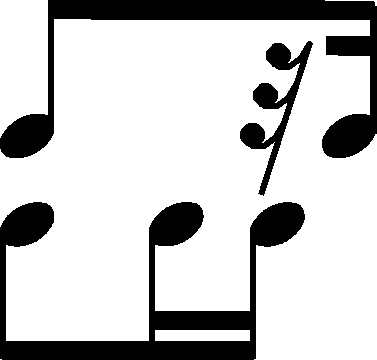



|
b. 27
|
composition: Op. 44, Polonaise in F♯ minor
category imprint: Differences between sources |
|||||||||||||
|
b. 28
|
composition: Op. 44, Polonaise in F♯ minor
..
The empty octave on the last L.H. quaver in GE is probably a mistake of the engraver (cf. analog. b. 54 and 287). It could also be the initial version, analogous to b. 32, 58, 104, 108 and 291, and perhaps overlooked in [A] at the time of entering corrections into b. 54 and 287 and supplemented in the basis for FE. category imprint: Differences between sources issues: Errors in GE , Omitted correction of an analogous place |
|||||||||||||
|
b. 29
|
composition: Op. 44, Polonaise in F♯ minor
..
The reason for the differences in the notation of the ornament preceding the d category imprint: Differences between sources issues: Inaccuracies in GE , Errors in EE , FE revisions , Arpeggio – vertical slur |
|||||||||||||
|
b. 29
|
composition: Op. 44, Polonaise in F♯ minor
..
We give the rhythm of the 1st crotchet in the bar after the rhythmically correct version of GE, conveying almost certainly the text of [A]. FE1 contains an erroneous rhythm missing one demisemiquaver – category imprint: Differences between sources issues: Errors in FE , FE revisions |
|||||||||||||
|
b. 29-30
|
composition: Op. 44, Polonaise in F♯ minor
..
The missing slur in FE is almost certainly an oversight of the copyist or of the engraver, repeated in EE. In the main text we follow GE. category imprint: Differences between sources issues: Errors in FE |

 in
in  1-f1 in
1-f1 in  (the scheme preserves the alignment of the R.H. part with respect to the L.H. part). According to us, it is most probably an unfinished notation of the rhythm we can see in
(the scheme preserves the alignment of the R.H. part with respect to the L.H. part). According to us, it is most probably an unfinished notation of the rhythm we can see in